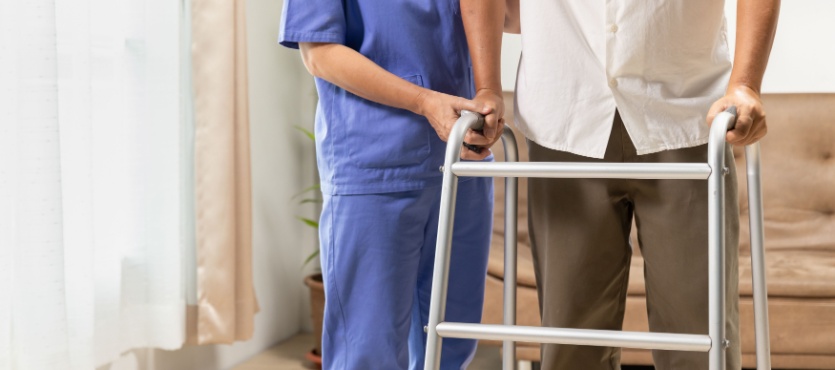Mobility and balance are critical aspects of maintaining independence and quality of life, especially for individuals who are elderly, recovering from illness, or managing chronic conditions. However, as mobility decreases, the risk of falls significantly increases, posing a serious threat to safety and health. Falls are a leading cause of injury among older adults, often resulting in fractures, hospitalizations, and long-term complications. Home health care services play a vital role in supporting mobility and implementing effective fall prevention strategies within the home environment.
Those seeking senior home care in Florida can explore how proper nutrition and hydration further contribute to overall safety and wellness through comprehensive senior wellness support that enhances strength, energy, and recovery.
Understanding the Challenges of Reduced Mobility
Reduced mobility can stem from various factors, including aging, chronic illnesses like arthritis or Parkinson’s disease, or recovery from surgery or injury. Limited mobility affects not only physical movement but also the ability to perform daily activities such as bathing, dressing, or cooking. Over time, this can lead to feelings of frustration, isolation, and dependency.
In addition to the emotional toll, reduced mobility increases the likelihood of falls. Physical limitations such as muscle weakness, impaired balance, and slower reflexes make it harder to recover from a misstep. Environmental factors within the home, such as loose rugs, poor lighting, or cluttered pathways, further heighten the risk. Addressing these challenges requires a proactive and comprehensive approach.
Practical Strategies for Fall Prevention
Fall prevention starts with understanding the risks and taking steps to minimize them. Creating a safer home environment is essential for reducing the likelihood of accidents and ensuring peace of mind for both patients and caregivers.
Home Safety Modifications
Home safety assessments conducted by home health professionals identify potential hazards and recommend modifications to create a secure living space. Simple changes, such as removing loose rugs, securing electrical cords, and decluttering walkways, can significantly reduce fall risks. Additional modifications include installing grab bars in bathrooms, placing non-slip mats in wet areas, and adding railings along staircases. Improved lighting throughout the home, particularly in hallways and near staircases, can also help prevent trips and falls.
Mobility Aids
For individuals with mobility challenges, using assistive devices can be transformative. Walkers, canes, and wheelchairs provide the necessary support to move around safely. Home health care professionals assess the patient’s mobility needs and recommend appropriate aids, ensuring they are properly adjusted for comfort and effectiveness. In some cases, advanced devices like motorized wheelchairs or stairlifts may be suggested for individuals with severe limitations.
Strength and Balance Exercises
Physical therapy plays a crucial role in fall prevention by strengthening muscles and improving balance. Home health care providers often incorporate exercises tailored to the patient’s abilities and goals. These exercises may include gentle stretches, leg lifts, or balance-focused activities like standing on one foot. Over time, regular physical activity not only reduces fall risk but also enhances overall confidence and independence.
The Role of Home Health Care in Fall Prevention
Home health care services provide comprehensive support for individuals at risk of falls, offering personalized care plans and ongoing monitoring to ensure safety and mobility.
Personalized Assessments
Home health professionals begin by conducting detailed assessments of the patient’s mobility, strength, and living environment. This evaluation identifies specific risk factors and informs the development of a tailored care plan. The plan may include recommendations for physical therapy, assistive devices, and home modifications.
Patient and Caregiver Education
Education is a cornerstone of fall prevention. Home health care teams provide patients and their families with valuable information on how to navigate their home safely and use mobility aids correctly. They also teach techniques for recovering from a fall, such as how to safely get up from the floor, which can minimize injury and fear.
Continuous Support and Monitoring
As a patient’s condition changes, their fall prevention needs may evolve. Home health care providers offer ongoing support, adjusting care plans and recommending new strategies as necessary. Regular check-ins ensure that any new risks are identified and addressed promptly.
Promoting Independence Through Mobility Support
While fall prevention is crucial, supporting mobility is equally important for maintaining a patient’s independence and quality of life. Encouraging movement and activity, even in small increments, helps preserve muscle strength and coordination. For individuals recovering from illness or surgery, mobility support aids in faster rehabilitation and a smoother transition back to daily routines.
Creating a Safer Home Environment
Falls are a significant concern for individuals with reduced mobility, but with the right support and strategies, they can be effectively prevented. By addressing environmental hazards, providing mobility aids, and incorporating physical therapy, home health care professionals play a critical role in enhancing safety and promoting independence. At All About You Home Health, we are committed to creating secure and supportive home environments that empower our patients to live confidently. To learn more about our services, visit our contact page.

